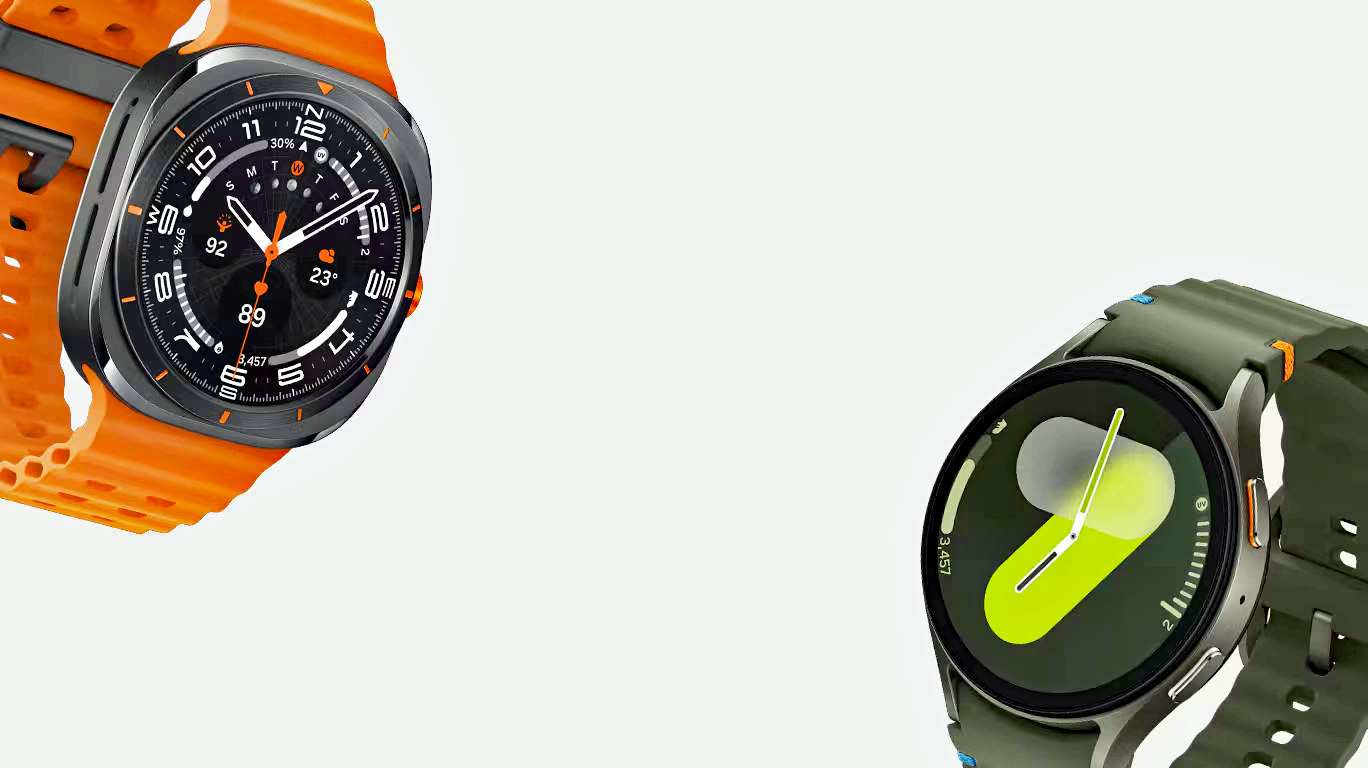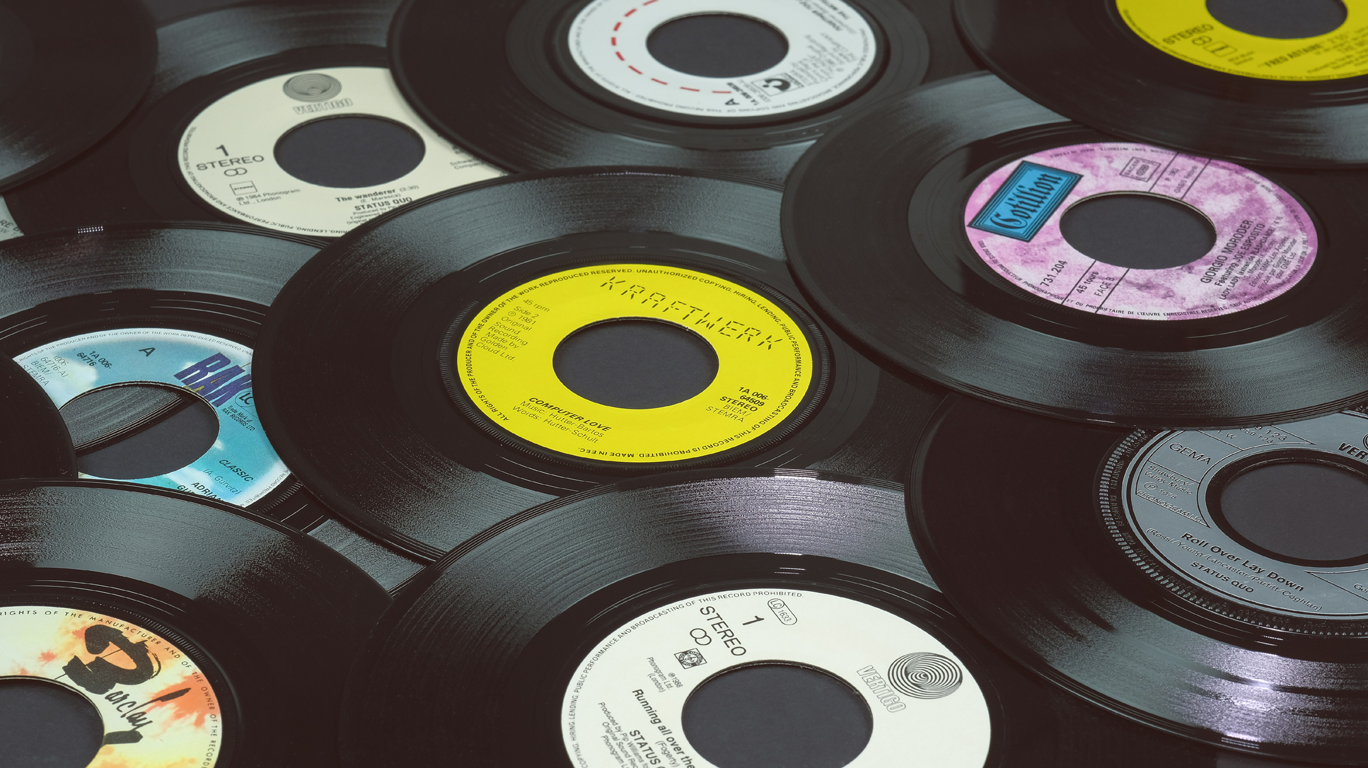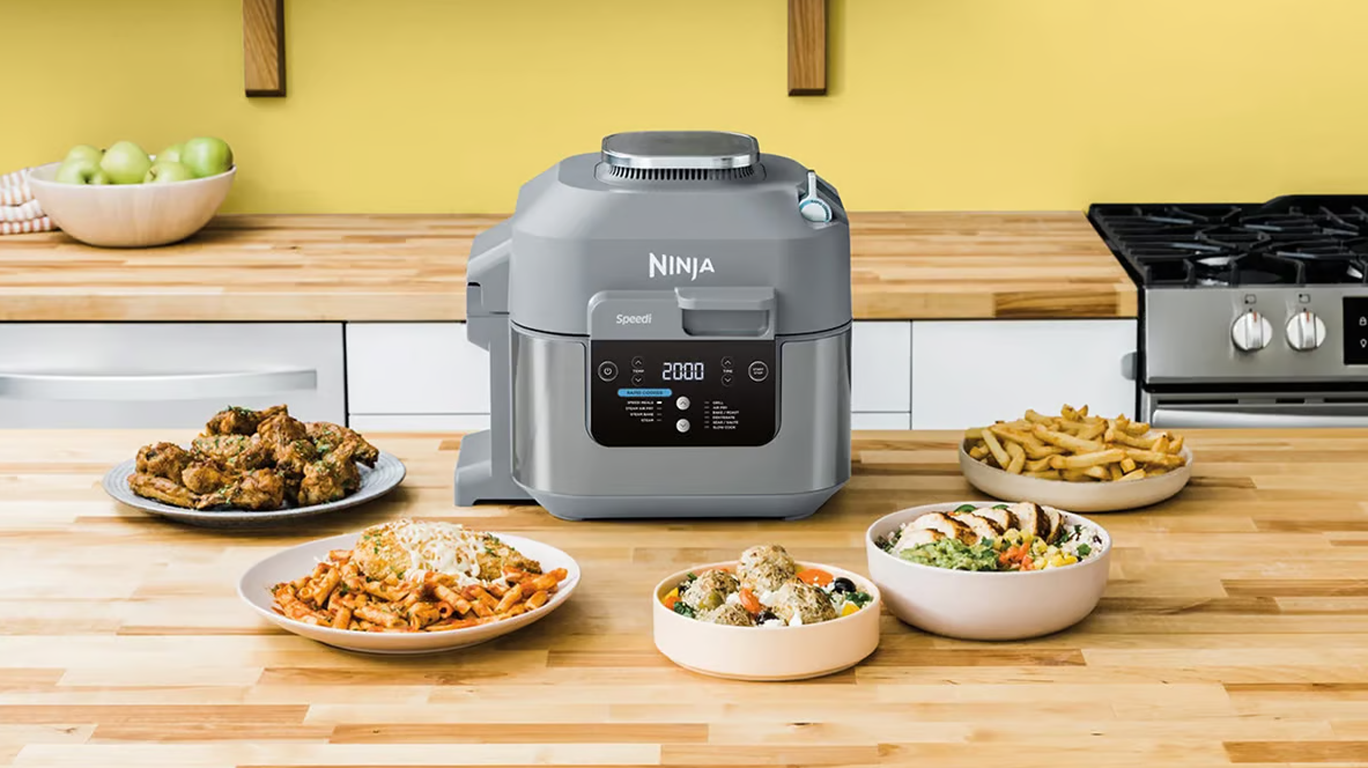Vinyl Record Players: The Retro Tech Making a Comeback

Tech doesn’t always progress in a straight line. While TVs, laptops, and smartphones continue to get thinner and more advanced, some older technologies have found their way back into our lives. Enter the vinyl record player – a retro format that dominated the 20th century before being overtaken by CDs and streaming. With options to suit all budgets and a growing market for both new and vintage records, now’s a great time to explore this nostalgic music format.
The Benefits of Vinyl
- You own the music. Unlike streaming services, which can remove tracks without notice, owning vinyl gives you access to your music whenever you want.
- Support your favourite artists. Buying a copy of your favourite singer, band or musician’s latest album is a great way to support them.
- The art factor. An album is much more than a black disc with songs on it: they come with large, visually striking covers and labels that you can display with pride.
- Better quality? Music fans have long debated which format has the best sound quality. Vinyl is often considered a more ‘authentic’ format, with the sound copied directly from the original masters, whereas CDs and digital files are compressed.
Buying a Record Player
How do Vinyl Records Work?
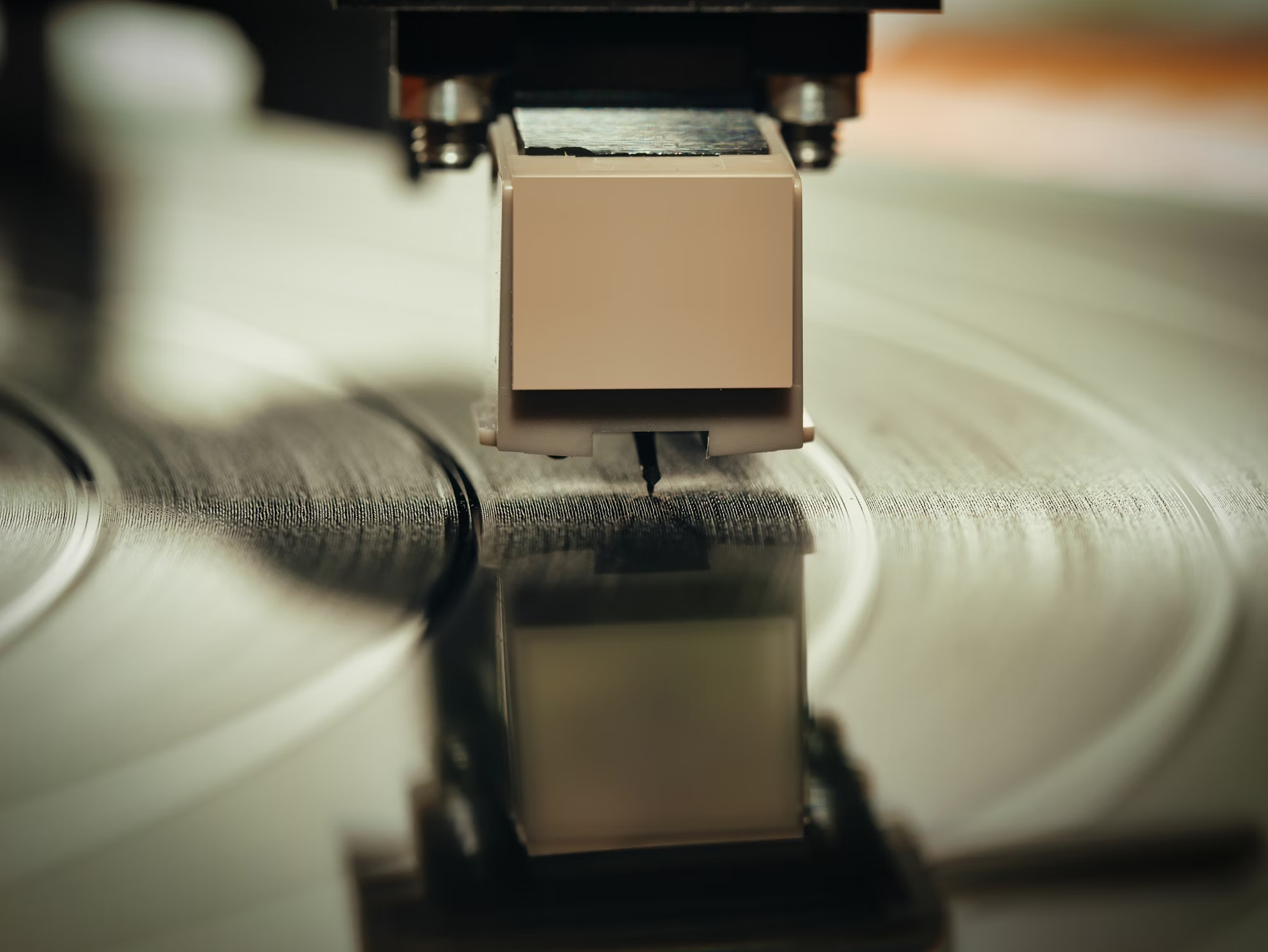
A vinyl record is a black plastic disc with a continuous groove of microscopic bumps and ridges. When placed on a record player (also known as a turntable) and spun, the stylus travels along the groove. The vibrations from the stylus’ needle are translated into an electrical signal, which is amplified into sound through speakers or headphones.
Do I Need an Expensive, Complex Setup?
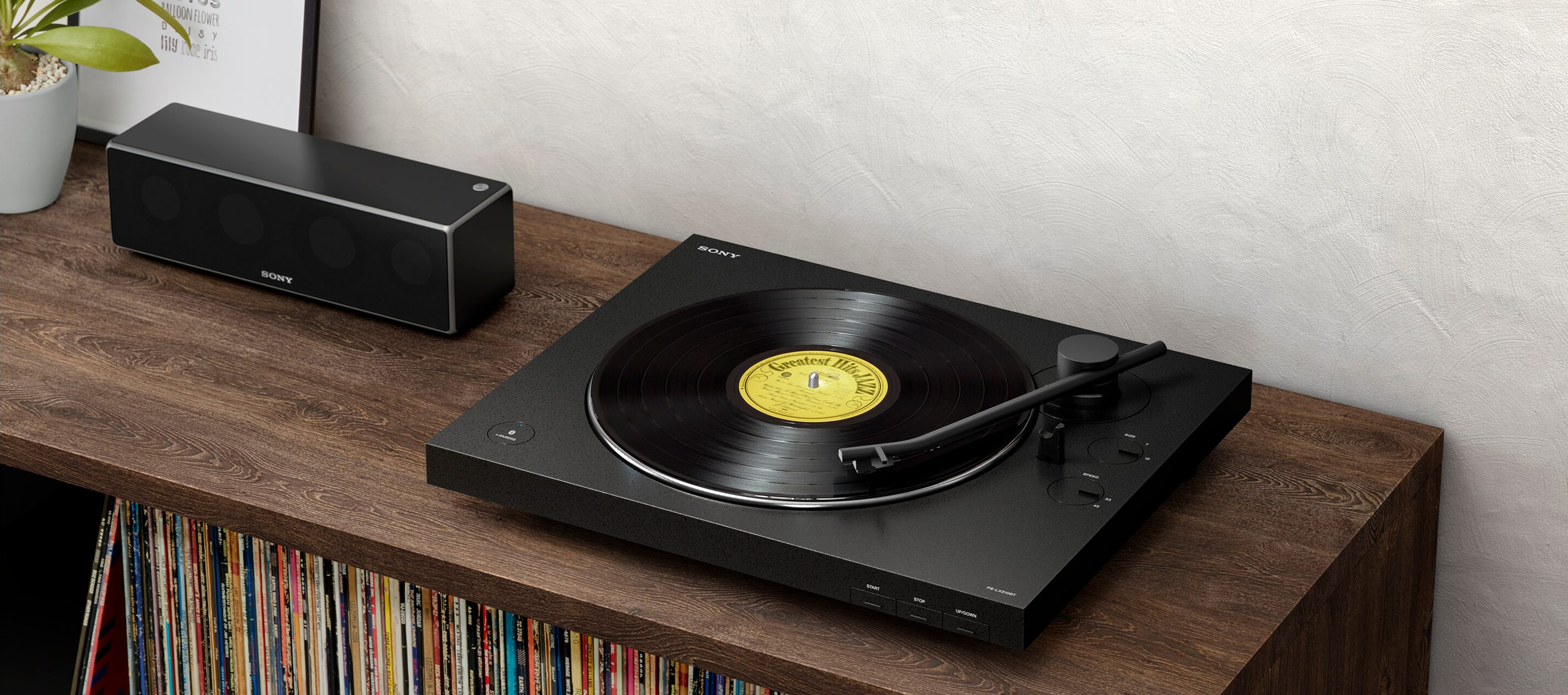 The Sony PS-LX310BT has automatic operation and can connect to speakers with Bluetooth. Image courtesy of Sony.
The Sony PS-LX310BT has automatic operation and can connect to speakers with Bluetooth. Image courtesy of Sony.
Not at all. While some enthusiasts invest in high-end components, many affordable record players are easy to set up and offer great sound. You should look out for a model that features automatic operation, which lifts, moves, and drops the needle for you. Many record players support different wired connections for speakers and even Bluetooth for wireless playback.
Buying Records
Where can I buy records?
Online Stores

Benefits: Whether it’s a major online marketplace or a specialist store, online shops can offer much more choice and variety than physical shops. It’s also easier to compare prices and offerings, allowing you to find the best possible deals.
Drawbacks: Once your seller dispatches your records, you have no control over what happens to them or how they're handled. They may get lost in the post or arrive damaged. If you’re buying second-hand, you will need to rely on the images provided by the seller and won’t be able to tell the sound quality until it has arrived.
Music Chain Shops
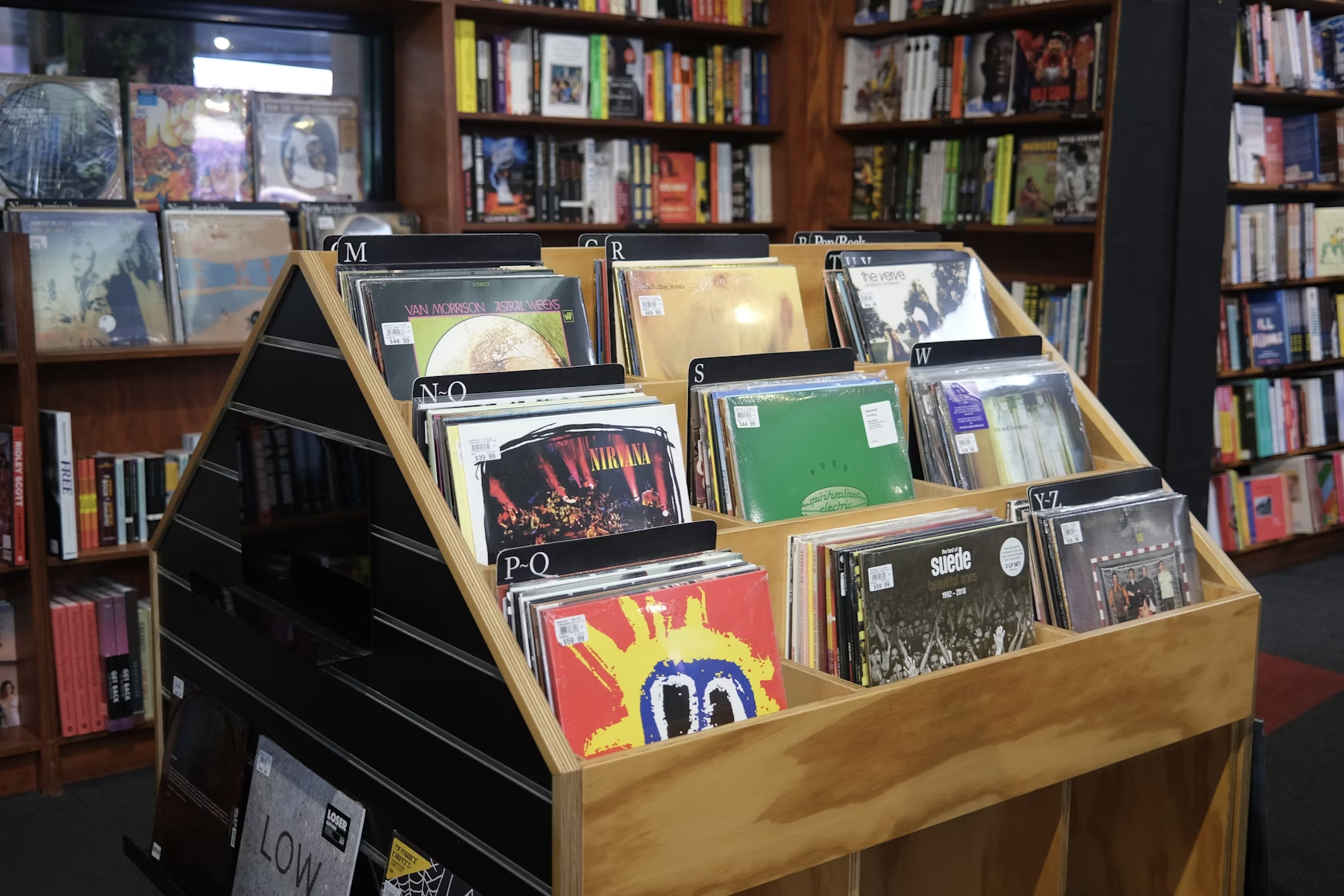
Benefits: Music chain shops offer a wide variety of new records to browse. The staff can also help with advice, orders, and returns.
Drawbacks: The records they sell will be limited by the shop's size and what they can order from their suppliers. You will also be unable to try the records before you buy them.
Second-Hand Record Shops
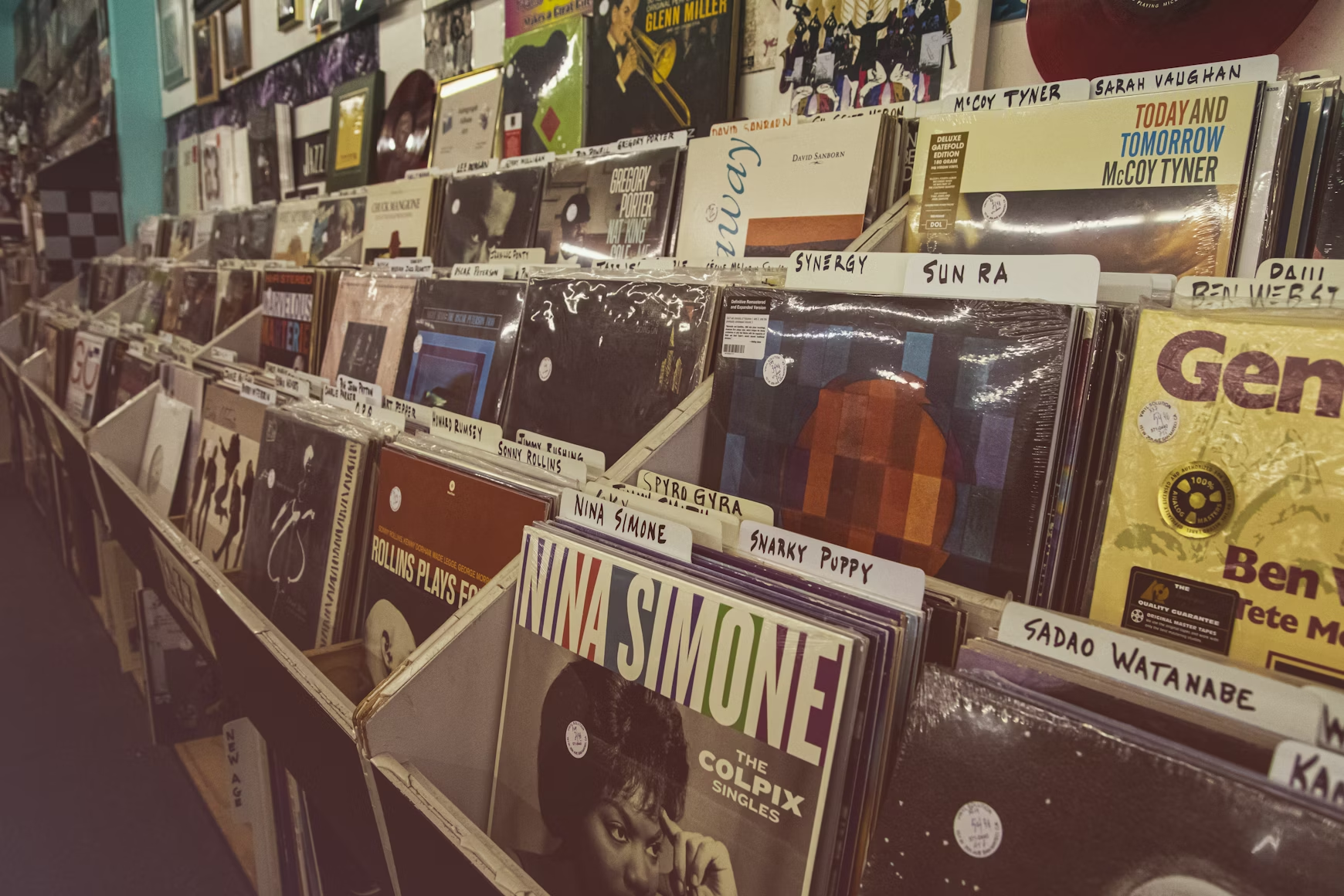
Benefits: Second-hand record shops are often run by big music fans, so they might be able to give you more in-depth advice. They may also offer other services, such as buying and trading for cash or store credit, sourcing records for you, and professional cleaning. Some have record players in the store, where you can test your records before you buy them. Because everything they sell is second-hand, they are also a more eco-friendly option.
Drawbacks: Second-hand record shops can be an intimidating experience if you are new to buying records, with lots of specialist lingo and strong opinions on equipment and music. Although most second-hand records will be less expensive than brand new ones, prices may vary depending on how rare or popular they are.
How are second-hand records graded?
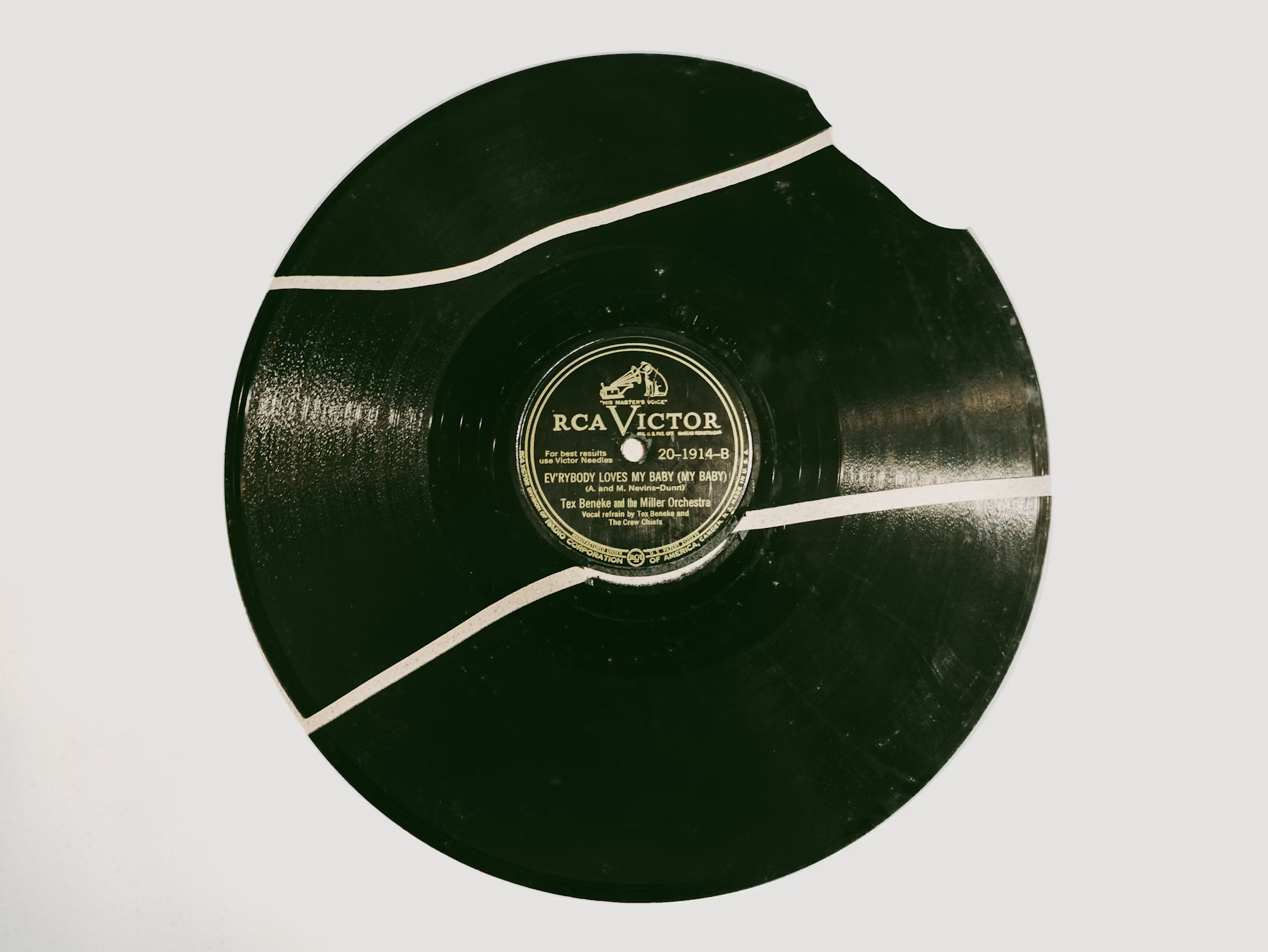 This record has a large chunk missing. It would be graded Bad.
This record has a large chunk missing. It would be graded Bad.
If you decide to buy your records second-hand, it is important to understand grading – this is the system that sellers use to work out the condition of a record and how much they can sell it for. Different sellers will have their own ways of classifying records, but we’ve provided one of the most popular record grading systems below.
- Mint – The record looks brand new, and plays with superb sound quality. The cover, inner sleeve, and any other accessories that originally came with the record are present and in perfect condition.
- Excellent - The record shows light signs of use but still sounds great. The cover and accessories have clearly been used but are well looked after.
- Good – The record shows obvious signs of use, such as scratches and scuff marks. It doesn’t sound crystal clear, but it still plays well. The cover shows signs of use and damage, such as creases, small tears and aging.
- Fair – The record has not been looked after and plays with noticeable noise. It may even jump or skip. The cover has obvious flaws, such as tears, splits and stains.
- Poor – The record is in bad shape, and may not play at all. The cover is damaged, and the accessories may be missing.
- Bad – The record is unplayable or broken. If the cover isn’t missing, it will be too damaged to be useful.
These descriptions shouldn’t put you off records that aren’t mint: excellent, good and fair records can still sound great, and may just need a thorough clean before you play them. If you want the best possible audio quality, you should probably buy a brand new copy instead – mint condition albums, especially if they are popular or very rare, can be very expensive.
Looking After Your Records and Record Player
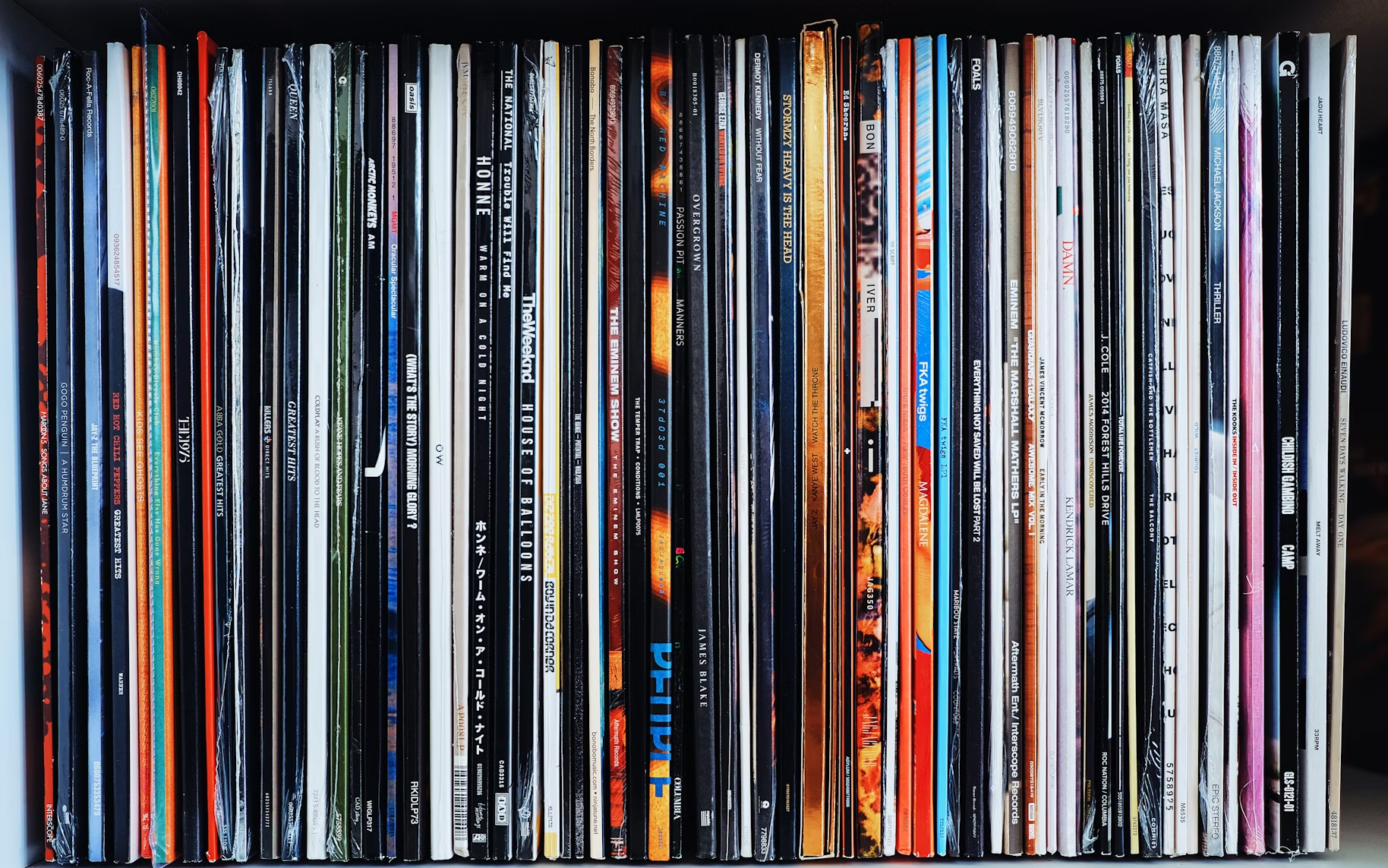
How do I look after my records?
Keeping your records in good condition will ensure that they can be played time and time again. Plus, if you decide to sell them, you may be able to get a better price. Records are one of the more fragile music formats, so you will need to look after them carefully.
You should always do the following:
- Keep them in the included cover and inner sleeve. These come with the record for a reason. The cardboard outer cover protects the record from knocks and drops, while the inner sleeve protects the record's surface from dust and fingerprints. If your record’s inner sleeve is missing or damaged, you can buy a replacement online.
- Store them upright in a box or on a shelf. Stacking records on top of one another can damage the ones at the bottom. You can buy special cases and shelves for records, but any shelf with solid sides that is at least 12 inches deep and 12 inches tall should be suitable.
- Keep them away from direct sunlight and rooms with extreme temperatures. Vinyl records are made from PVC (polyvinyl chloride), a type of plastic that warps easily in high temperatures. A room out of direct sunlight, a shelf with a door or a case with a lid can all help to keep your records safe.
- Don’t bend, toss or handle them roughly. Even slight damage to a record can cause clicks and scratches on the recording.
How do I clean my records?
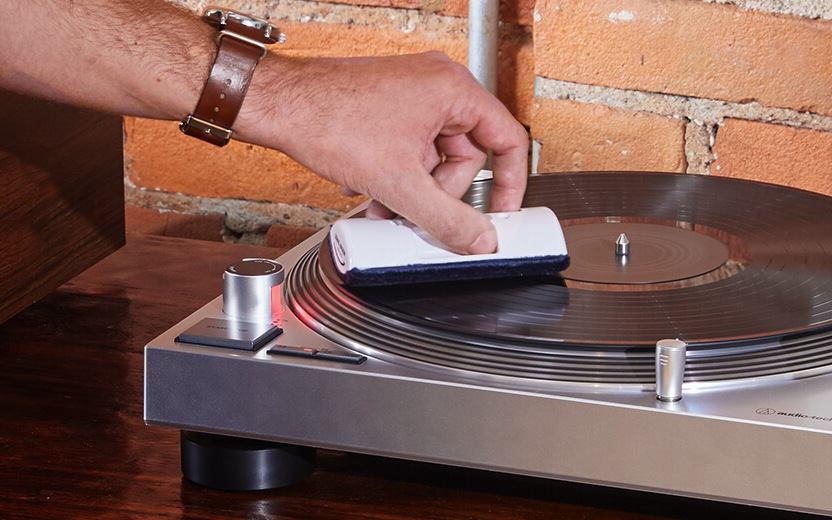 Image courtesy of Audio-Technica.
Image courtesy of Audio-Technica.
Even if you keep your records in optimal storage conditions, you will still need to clean them each time you play them.
To clean your records, you'll need:
- Microfibre cloth
- Cleaning solution (or distilled water)
- Carbon fibre brush
Cleaning kits containing these items, as well as extra cleaning tools for your records and turntable, can be purchased from reputable online retailers.
To clean a record, follow these instructions:
- Remove the record from its cover and place it on the turntable.
- Turn the turntable on, but do not place the needle on the record.
- Gently rest the carbon fibre brush on the surface of the record and allow it to make a few full rotations.
- Wipe the carbon fibre brush away to remove dust and debris.
- Turn the turntable off, allow the record to come to a stop and remove it from the turntable.
- Spray the record with your cleaning solution while holding it at the edges.
- Using the microfibre cloth, wipe the record in a circular motion following the groove.
- Allow the record to dry, then repeat on the other side.
How do I clean my record player?
 Image courtesy of Pro-Ject.
Image courtesy of Pro-Ject.
Records need cleaning so often because playing them attracts dust. The motion of the stylus in the record’s groove generates static electricity, and this causes dust in the surrounding area to gather on the record, turntable and needle. Even if your records are clean, a dusty turntable will still impact the sound of your music. Before you do anything to your record player, you should make sure it is switched off and any records left on it are removed.
To keep the record player clean, you should do the following:
- Dust the flat surfaces and tone arm, being careful of switches, buttons, and other fragile parts.
- Remove the turntable mat and dust it. If your mat is made of the same material on both sides, you can flip it to even out the wear and use.
- Using a stylus brush, gently swipe the needle back to front to dislodge built-up dust.
- Replace the stylus once a year or whenever clean records start to play with a dull, muffled sound. Your record player’s instruction manual will list the name of the stylus model, for which you can buy a replacement online. You should avoid playing records with a dull needle, as this can damage the groove.
- If your record player came with a dust cover, place it on the record player when it is not in use.
Conclusion
Vinyl records might require more care than digital music, but they offer a uniquely satisfying way to experience your favourite songs. With easy-to-use options for wired or wireless listening, choosing a new record player doesn’t have to be a difficult choice. Knowing where to find great records, and how you can keep them and your turntable clean, makes starting and growing a collection easy and fun. Whether you’re new to records or breaking out an old collection, now’s a great time to drop the needle and get into the groove.
